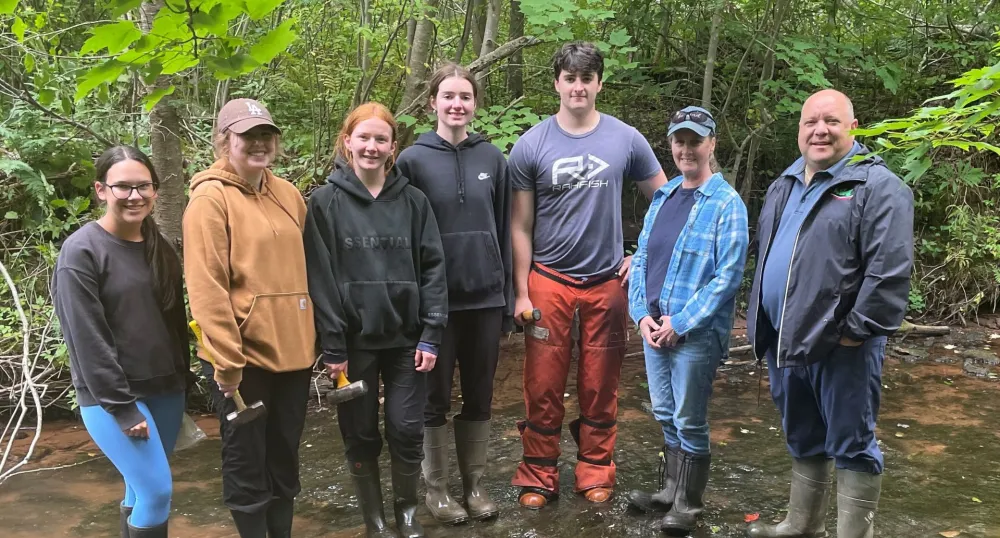Oak trees helping fish and wildlife in Richmond Bay Watershed

Sometimes the best way to help trout and salmon thrive is by planting a tree. That’s why Richmond Bay Watershed Association is now hard at work planting oak trees along a stream that feeds into Grand River.
Cathy Gallant is the watershed coordinator for the area that encompasses Wellington, Tyne Valley and more. She said, “This river, when we first started many years ago, it had beaver dams from the head of tide, all the way up, just one after the other, and the whole system was full of sediment. We’ve done a lot of work here to get back to rock gravel.”
Red oak is one of her main focuses this year. Volunteers were collecting acorns last year, and she and her team experimented with the best ways to give the oaks a head start. They’ve tried planting them in pots to get the seedlings started in the fall, germinating in the fridge over the winter or planting the acorns right in the ground. “With our changing climate, the red oak has roots that grow right deep and down, and they hold up to those hurricane winds, so they hold up for the long term.”
There is a small run of salmon in this stream, so planting a variety of trees helps support both fish and wildlife. Tree roots hold the soil in place, keeping the banks stable and reducing erosion, even after extreme weather. Strong, healthy banks also help keep water in the stream channel, which protects fish habitat. Oaks are a new focus, but other varieties of trees that have been planted in the riparian zone over 20 years, and these trees now provide much needed shade to the river, helping to keep temperatures cool for these cold-water fish species.
In some spots, the group is also adding woody material to strategic areas of the stream that lack natural structure. These structures help the stream hold onto gravel, which salmon and brook trout use for shelter or to spawn. Cathy says the debris also acts as ‘speed bumps in the river,’ slowing down water flow after heavy rains and reducing erosion.
Another activity that tied into this year’s project included tackling invasive plants in priority areas. The team used a mix of control methods while planting fast-growing native trees and shrubs, which will eventually provide shade to help limit invasive spread and support native habitat recovery.
Beyond the work in this particular stream, the team took on many other projects in recent years, like installing improvements to the pond in Wellington which now provides cool, aerated water to the fish. They also assisted the Island Nature Trust with bank swallow studies near the coast.
Five students are working for the watershed this summer. Rory Francis, the project manager for the watershed group, said the job is “a nice balance, getting to work outdoors on a team while also helping to further my studies.” And he’s learning on the job. The watershed group provided him watershed worker training along with chainsaw safety and first aid.
The students spend part of their day in the field, planting trees and doing stream restoration. They also get the chance to monitor and analyze scientific data from water monitoring devices around the watershed. Cathy encourages them to stretch their skills by taking this information and developing infographics and newsletters to help get the word out about the state of the watershed.
She says the best part of her job is watching their skills develop over the season. “They can look into a topic, learn everything about it, and it works. They start out shy but become confident as they work on these projects.”
For more information about this watershed group, visit Richmond Bay Watershed Association Inc.
Additionally, if you are interested in becoming a part of your local watershed group, go to the PEI Watershed Alliance website to find a group near you.
